In the following tutorial, you will learn how to create a simple power button in Adobe Illustrator. In the beginning you will learn how to set up a simple grid and how to create and center a simple rectangle that will make up your background. Next, using basic vector shape building techniques you will learn how to create the circle and the compound path that will make up your power button. Finally, taking full advantage of the Appearance panel, you will learn how to add color, shading, highlights and depth for your shapes.
Tutorial Details
- Program: Adobe Illustrator CS5
- Difficulty: Beginner-Intermediate
- Topics Covered: Basic Tools & Effects and the Appearance panel
- Estimated Completion Time: 45 minutes
Final Image
As always, this is the final image that we’ll be creating:
Step 1
Hit
Command + N to create a new document. Select
Pixels from the
Units drop-down menu, enter
600 in the
Width and
Height boxes then click on the
Advanced button. Select
RGB,
Screen (72ppi) and make sure that the
Align New Objects to Pixel Grid box is unchecked before you click
OK. Enable the Grid (
View > Show Grid) and the Snap to Grid (
View > Snap to Grid). You will need a grid every
5px, so simply go to
Edit > Preferences > Guides > Grid, enter
5 in the
Gridline every box and
1 in the
Subdivisions box. You should also open the
Info panel (
Window > Info) for a live preview with the size and position of your shapes. Do not forget to set the unit of measurement to pixels from
Edit > Preferences > Units > General. All these options will significantly increase your work speed.
Step 2
Pick the
Rectangle Tool (M) and focus on your Toolbar. Remove the color from the stroke then select the fill and set its color at
R=50 G=50 B=50. Now, simply click on your artboard to open the
Rectangle window. Enter
610 in the
Width and
Height boxes then click the
OK button. This should create a
610px square. Next, you will need to center it, so open the
Align panel (
Window > Align). Set the aligning to artboard (open the fly out menu and go to
Show Optionsif you can’t see the
Align To section as shown in the following image), then simply click the
Horizontal Align Center and
Vertical Align Center buttons. In the end, your dark shape should cover the entire artboard as shown in the following image.
Step 3
Return to your Toolbar, set the fill color at
R=70 G=175 B=15 and switch to the
Ellipse Tool (L). Create a
110px circle and center it using the
Horizontal Align Center and
Vertical Align Center buttons from the
Align panel.
Step 4
Make sure that your green circle is selected and go to
Object > Path > Offset Path. Enter a -40px Offset and click
OK. Select the resulting shape and focus on the
Appearance panel (
Window > Appearance). Remove the color from the fill, select the stroke, set the color at white and increase the weight to 6pt.
Step 5
Select the circle with the white stroke and go to
Object > Path > Add Anchor Points. Keep focusing on this shape, grab the
Direct Selection Tool (A), select the top anchor point (highlighted in the second image) and simply hit the
Delete key from your keyboard to remove it. Make sure that the remaining path stays selected, open the
Stroke panel (
Window > Stroke) and simply check the
Round Cap button. In the end, things should look like in the third image. Pick the
Pen Tool (P), create a
15px, vertical path and place it as shown in the fourth image. Add a white, 6pt stroke for this new path, select it and check the
Round Cap button from the
Stroke panel.
Step 6
Make sure that both, white paths are selected and go to
Object > Path > Outline Stroke. Select the resulting shapes and hit
CTRL + 8 (or go to
Object > Compound Path > Make) to turn them into a simple compound path.
Step 7
Make sure that your green circle stays selected, focus on the
Appearance panel and add a second fill using the
Add New Fill button (pointed by the little, blue arrow in the following image). Select this new fill, open the
Gradient panel (
Window > Gradient) and simply click on the gradient thumbnail to add the default black to white linear gradient. Keep focusing on your
Gradient panel, set the angle at 90 degrees then move to the gradient colors. Select the right slider and set the color at
R=0 G=95 B=0 then select the left slider and set the color at
R=130 G=225 B=75. Make sure that this second fill is still selected and go to
Effect > Path > Offset Path. Enter -8px Offset and click
OK.
Step 8
Make sure that your green circle stays selected, focus on the
Appearance panel and add a third fill using that same
Add New Fill button. Select this new fill, add the white to black linear gradient and set its angle at 90 degrees. Keep focusing on the
Appearance panel and click on the little arrow icon that stands for your top fill. Simply click on that
Opacity piece of text to open a fly-out
Transparency panel. Change the
Blending Mode to
Overlay and lower the
Opacity to
60% then go to
Effect > Path > Offset Path. Enter a -4px Offset and click
OK.
Step 9
Make sure that your green circle stays selected, focus on the
Appearance panel and add a fourth fill. Select it and add the radial gradient shown below. Make sure that this new fill stays selected, grab the
Gradient Tool (G), focus on your Artboard, stretch that gradient roughly as shown in the following image and then go to
Effect > Path > Offset Path. Enter a -10px Offset, click
OK and go to
Effect > Stylize > Inner Glow. Enter the properties shown in the following image and click
OK.
Step 10
Make sure that your green circle stays selected, focus on the
Appearance panel, select the existing stroke and set its color at black. Move to the
Stroke panel, make sure that the weight is set at 1pt then simply check the
Align Stroke to Inside button. Return to the
Appearancepanel, keep focusing on this black stroke, lower its
Opacity to
15%, change the
Blending Mode to
Soft Light and go to
Effect > Path > Offset Path. Enter a -10px Offset and click
OK.
Step 11
Make sure that your green circle stays selected, focus on the
Appearance panel, select the existing stroke and duplicate using the
Duplicate Selected Item button (pointed by the little, blue arrow in the following image). Select this newly added stroke, increase the weight to 3pt and lower its
Opacity to
10%. Make sure that this 3pt stroke is selected and duplicate it using that same
Duplicate Selected Item button. Select this third stroke, increase the weight to 5pt and lower its
Opacity to
5%.
Step 12
Make sure that your green circle stays selected and focus on the
Appearance panel. Add a new fill, set its color at white and drag it in the top of the
Appearance panel. Make sure that this new fill is selected, lower its
Opacity to
50%, change the
Blending Mode to
Overlay and go to
Effect > Distort & Transform > Transform. Enter the properties shown in the following image, click
OK and go to
Effect > Warp > Arc. Enter the attributes shown below and click
OK.
Step 13
Make sure that your green circle stays selected and focus on the
Appearance panel. Add a new fill, set its color at
R=30 G=30 B=30 and drag it in the bottom of the
Appearance panel. Make sure that this new fill is selected and go to
Effect > Path > Offset Path. Enter a 4px Offset, click
OK and go to
Effect > Stylize > Drop Shadow. Enter the attributes shown below and click
OK.
Step 14
Make sure that your green circle stays selected and focus on the
Appearance panel. Add a new fill, drag it in the bottom of the
Appearance panel, add the linear gradient shown below and go to
Effect > Path > Offset Path. Enter a 15px Offset, click
OK and go to
Effect > Blur > Gaussian Blur. Enter a 10px radius and click
OK.
Step 15
Make sure that your green circle stays selected and focus on the
Appearance panel. Select the bottom fill and duplicate it using that same
Duplicate Selected Item button from the bottom of your
Appearance panel. Focus on this new fill, open the existing
Offset Path effect, decrease the Offset to 10px then open the existing
Gaussian Blur effect, decrease the radius to 3px and click
OK.
Step 16
Make sure that your green circle stays selected and focus on the
Appearance panel. Select that green (
R=70 G=175 B=15) fill and go to
Effect > Stylize > Inner Glow. Enter the properties shown in the following image, click
OK and go to
Effect > Stylize > Outer Glow. Enter the attributes shown below and click
OK. In the end, things should look like in the following image.
Step 17
Make sure that your compound path stays selected and focus on the
Appearance panel. Select the fill and replace the existing color with the radial gradient shown in the following image.
Step 18
Make sure that your compound path stays selected, focus on the
Appearance panel and add a second fill. Select it, set the color at
R=100 G=205 B=45, change the
Blending Mode to
Multiply and go to
Effect > Path > Offset Path. Enter a -2.5px Offset and click
OK.
Step 19
Make sure that your compound path stays selected and focus on the
Appearance panel. Select the existing stroke, set the color at black, lower its
Opacity to
15% and check the
Align Stroke to Inside button from the
Stroke panel. Return to the
Appearance panel and add a second stroke for this shape using the
Add New Stroke button (pointed by the little, blue arrow in the following image). Select this new stroke, lower its
Opacity to
25% and check the
Align Stroke to Outside button from the
Stroke panel.
Step 20
Reselect the circle and the compound path that make up your power button and duplicate them (
CTRL + C > CTRL + F). Select these copies and simply drag them several pixels down as shown in the second image.
Step 21
Select the circle that makes up your second button and focus on the
Appearance panel. Select the fifth fill (start the count from the bottom) and simply replace the colors used for the existing linear gradient with the ones shown in the following image. Move down to the green fill and replace the existing color with
R=227 G=128 B=10. Keep focusing on this orange fill, open the existing
Outer Glow effect and enter the attributes shown in the following image.
Step 22
Select the compound path that makes up your second button and focus on the
Appearancepanel. Select the top fill and simply replace the green with
R=251 G=176 B=64.
And We’re Done!
I hope you’ve enjoyed this tutorial and can apply these techniques in your future projects.
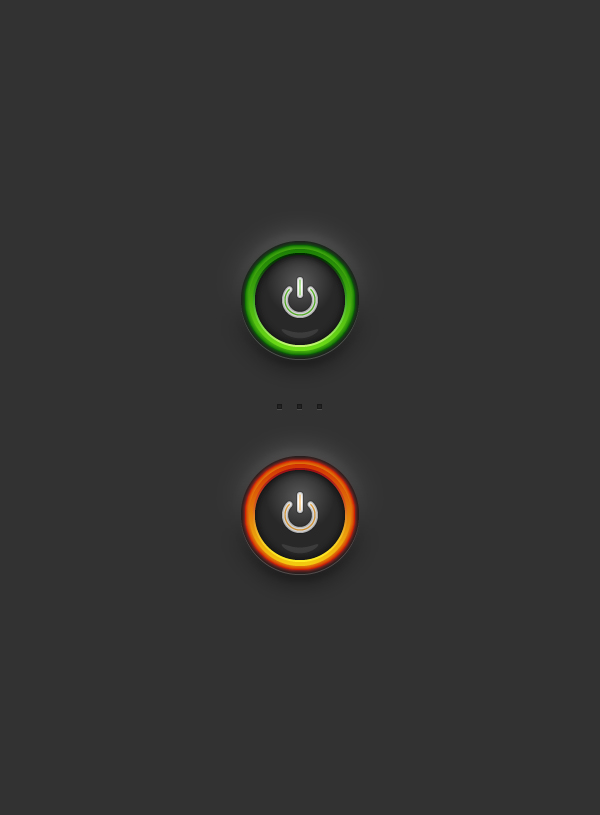
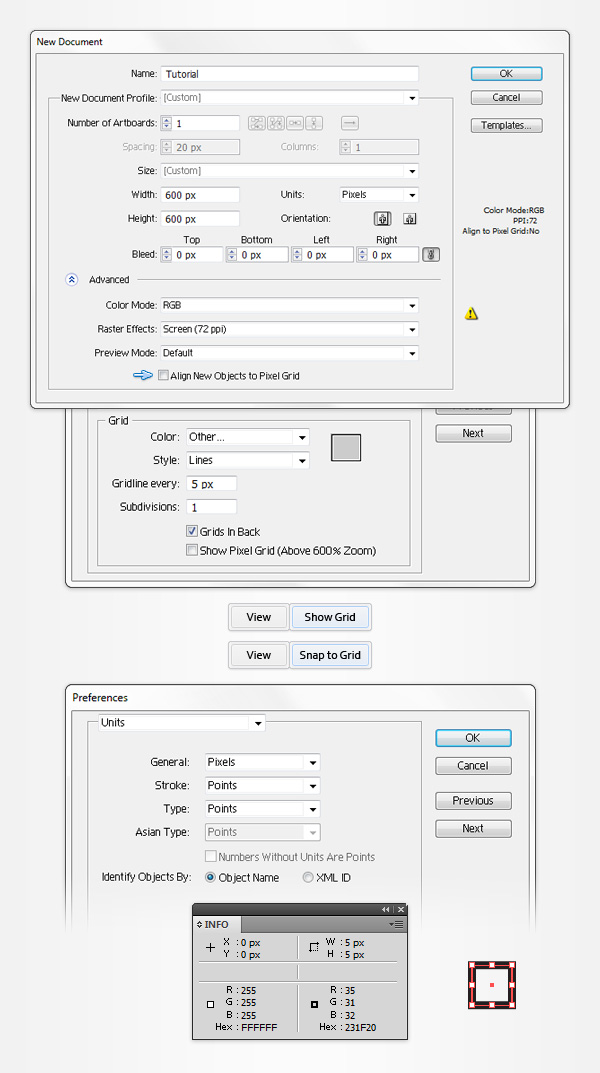
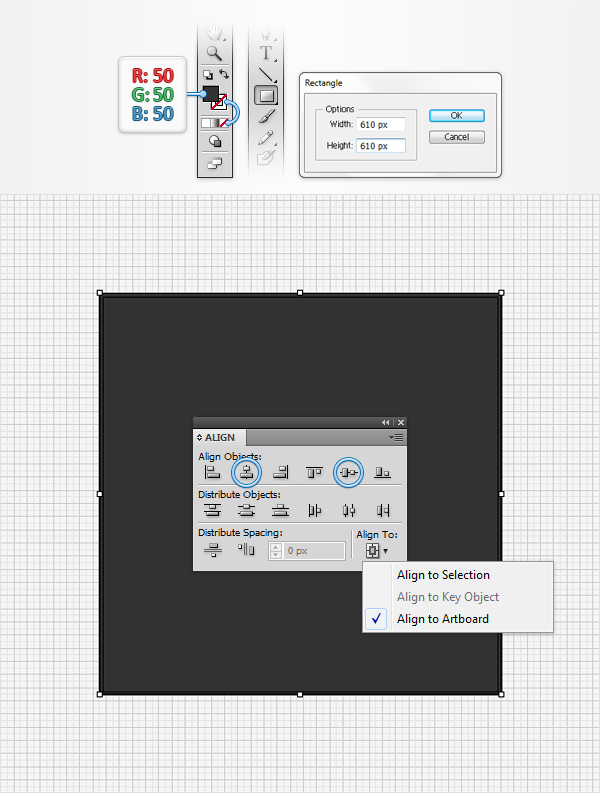
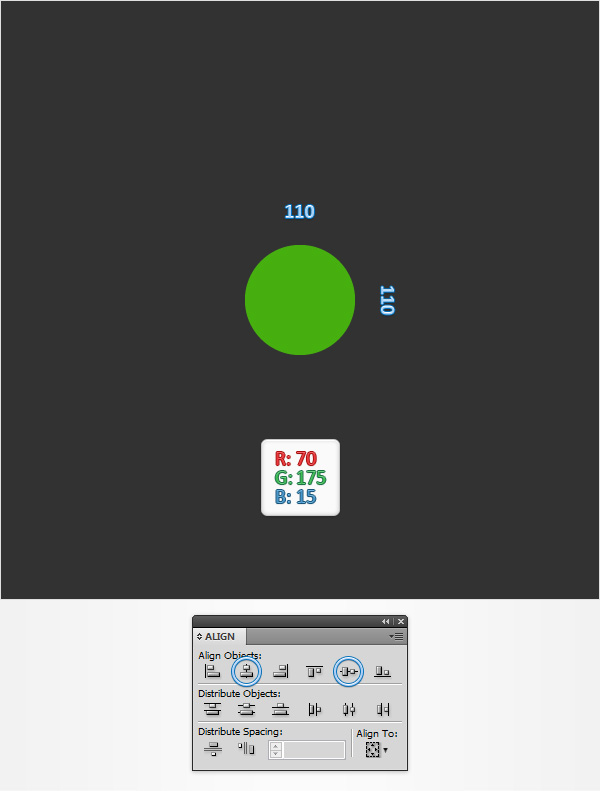
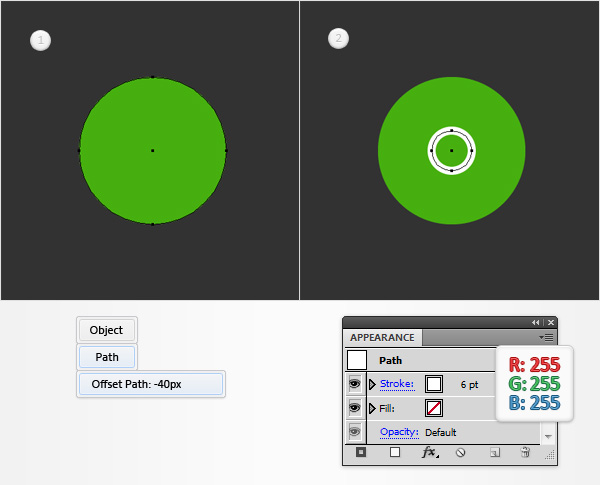
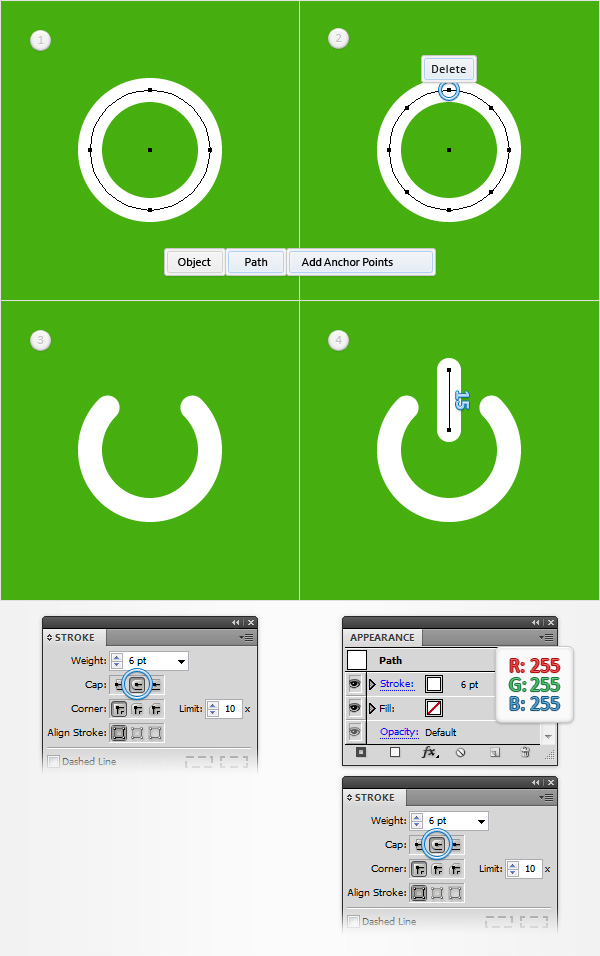
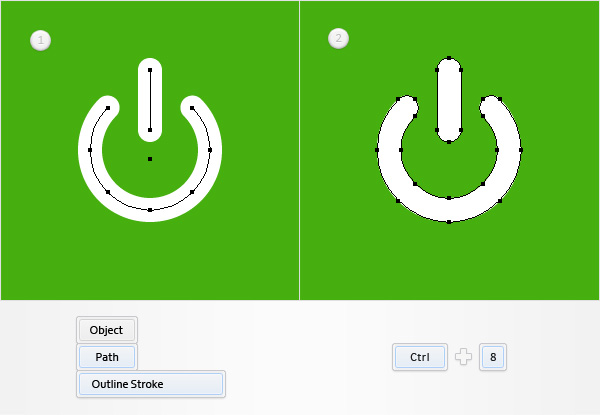
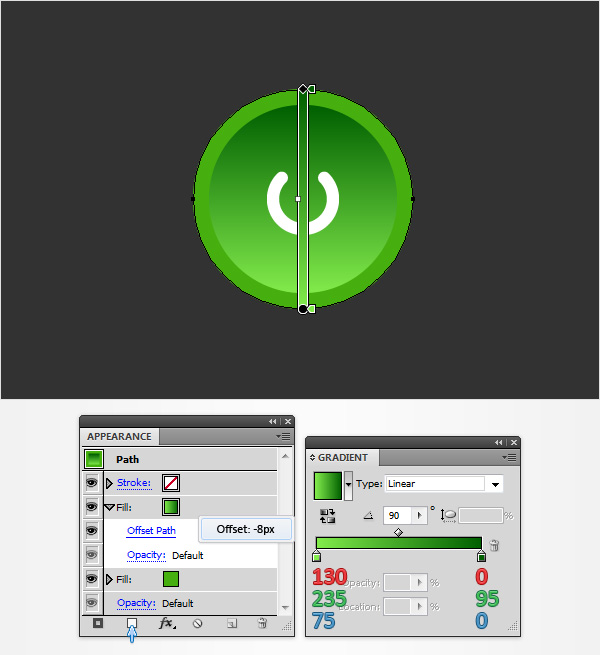
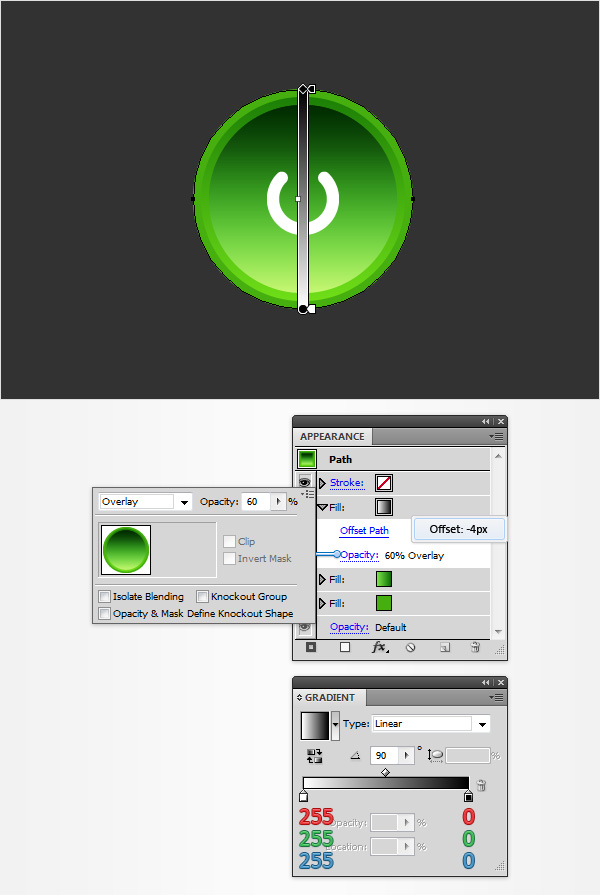
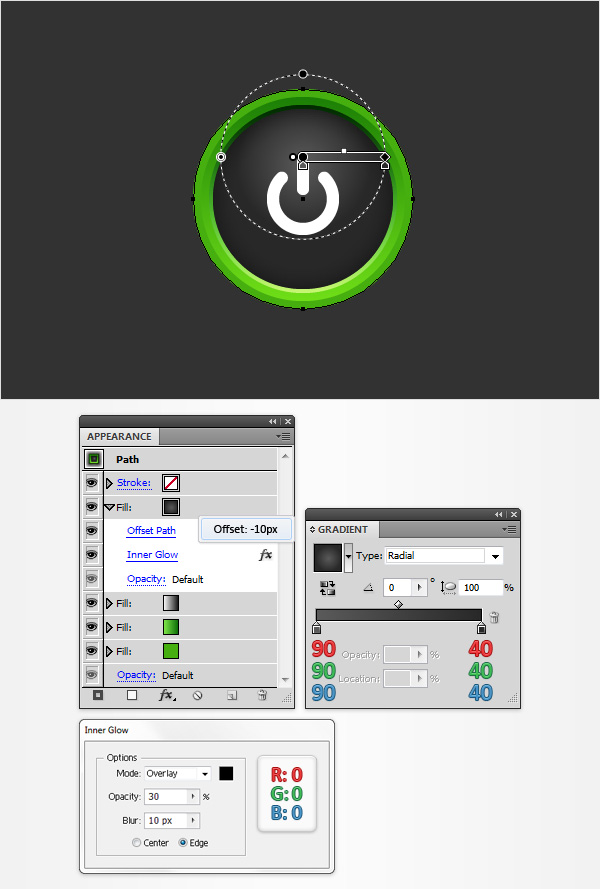
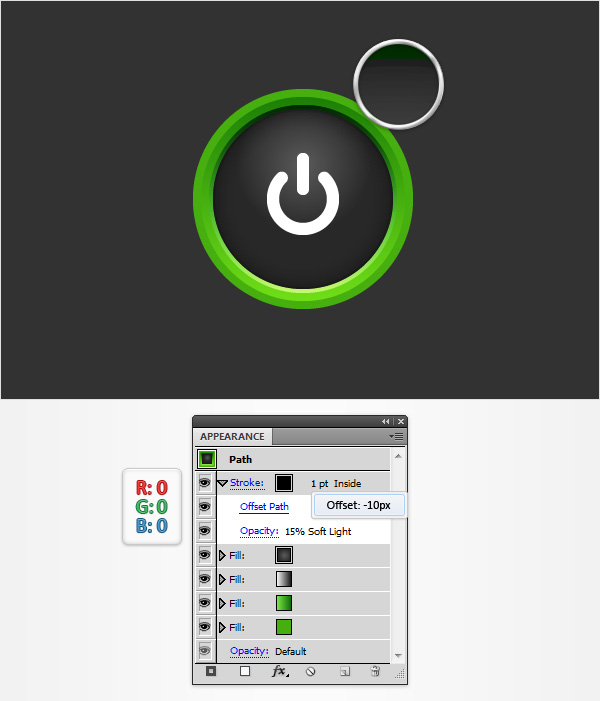
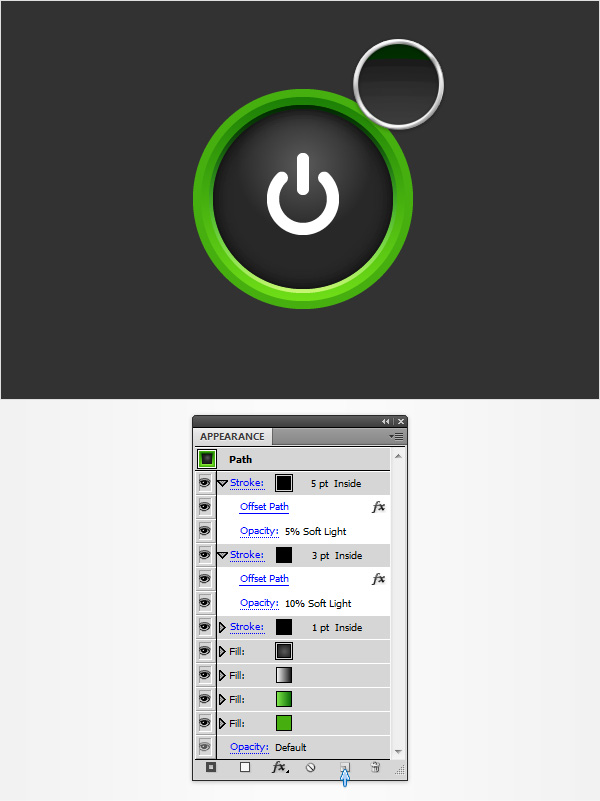
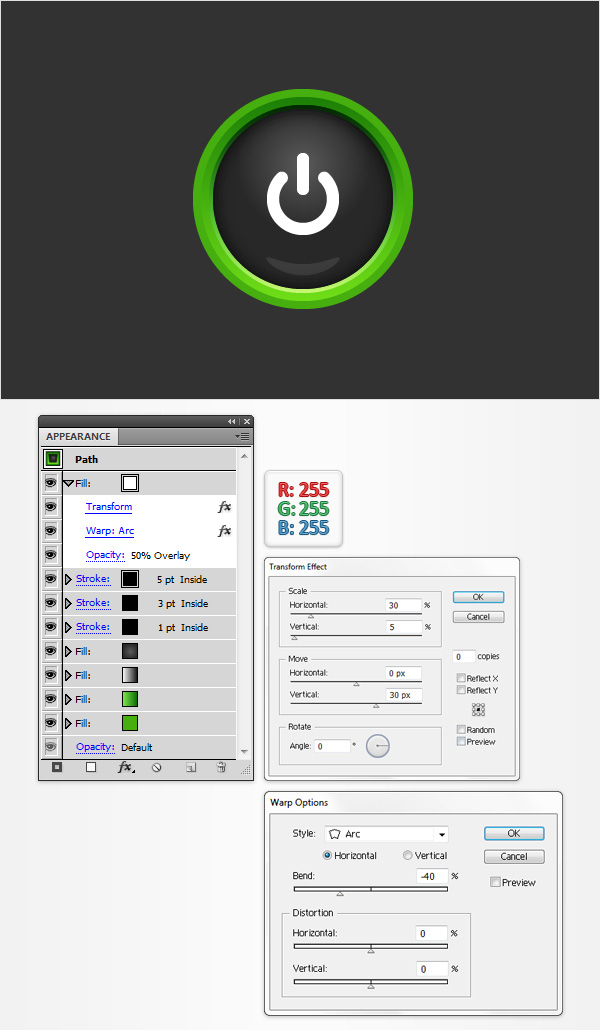
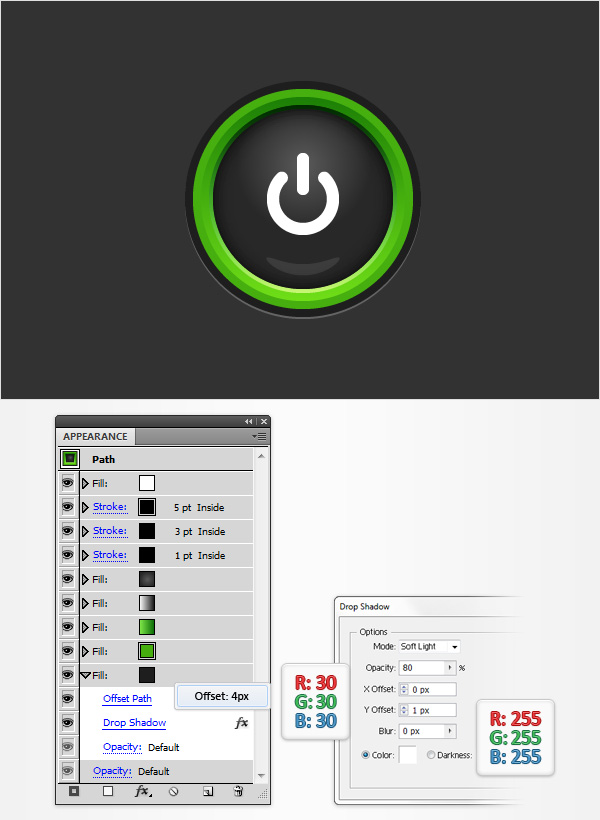
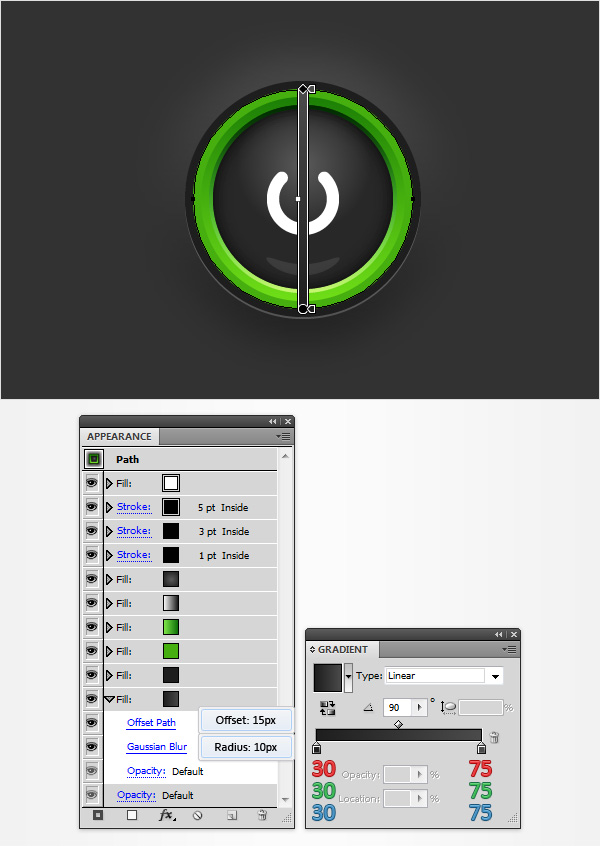
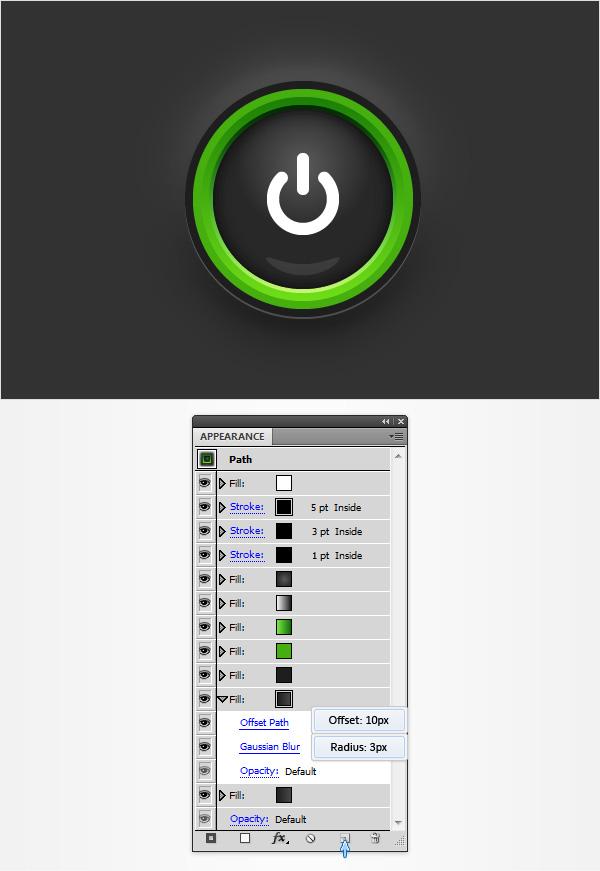
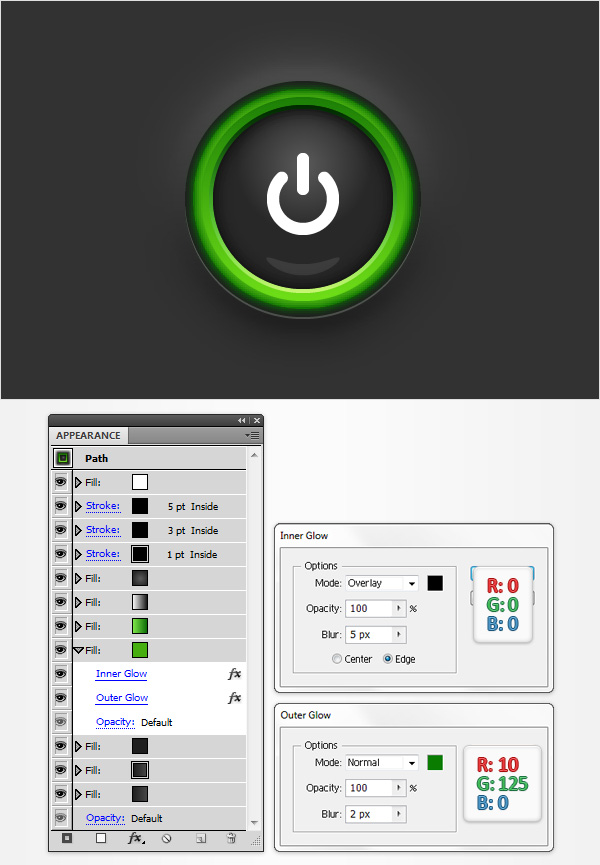
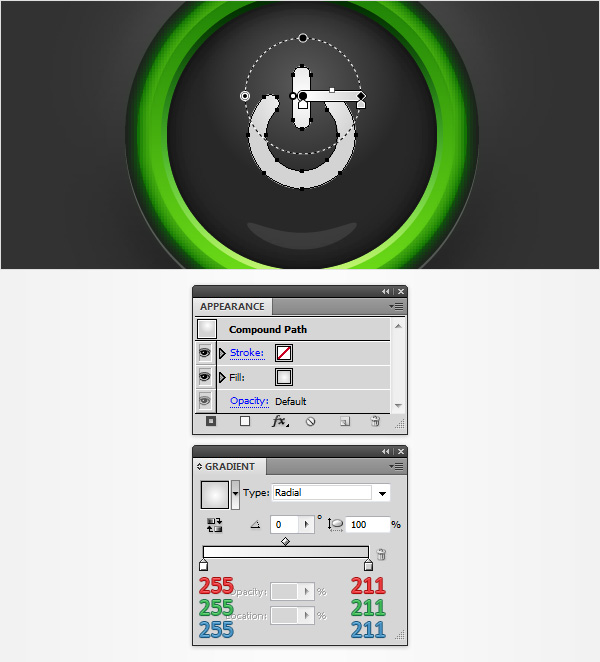
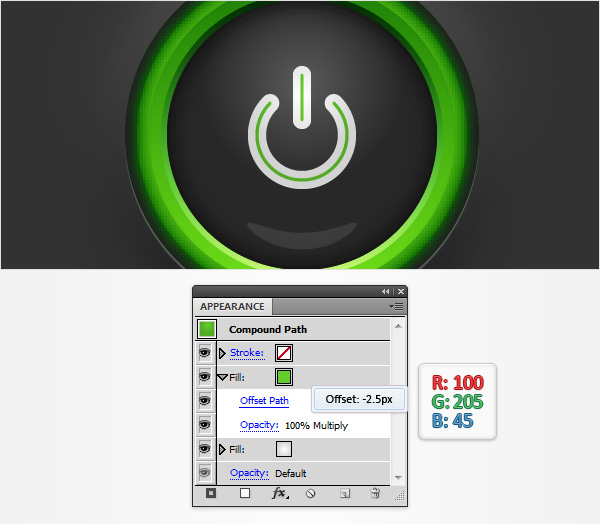
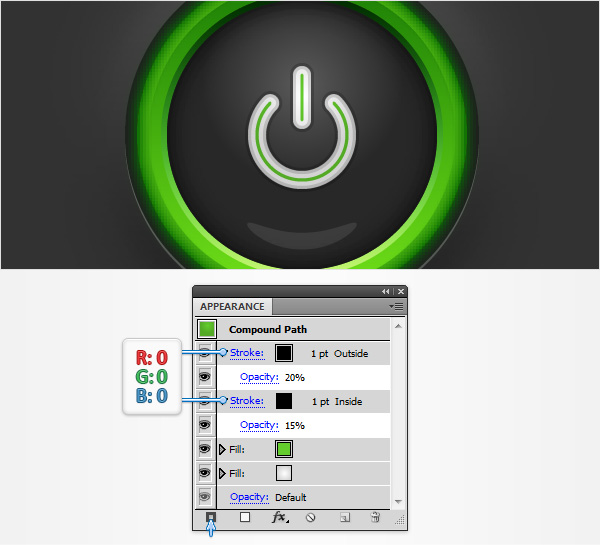
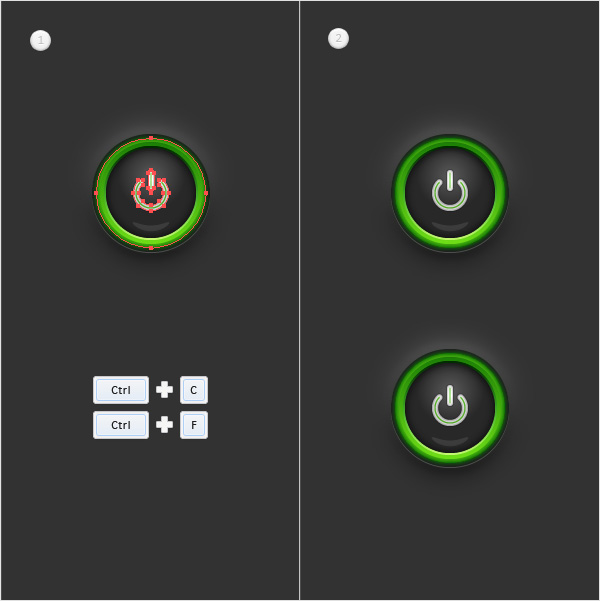
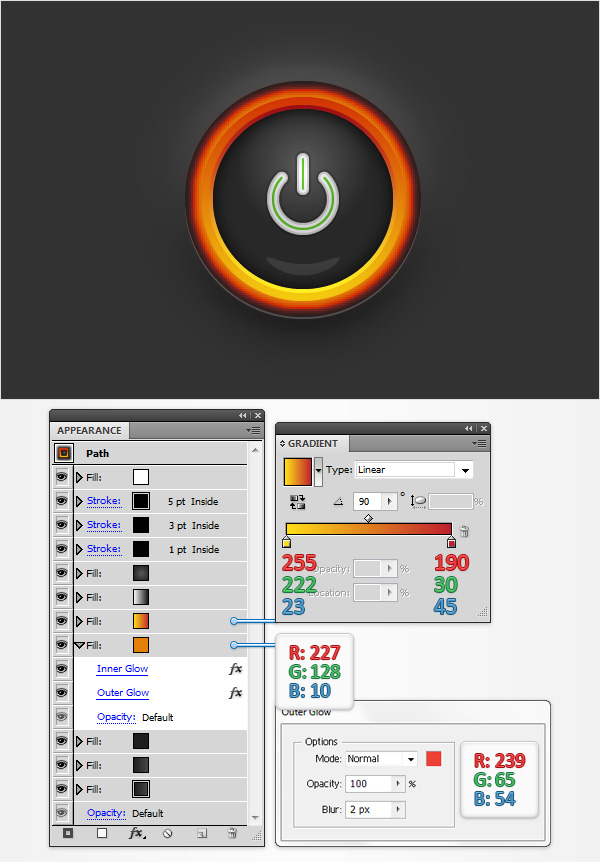
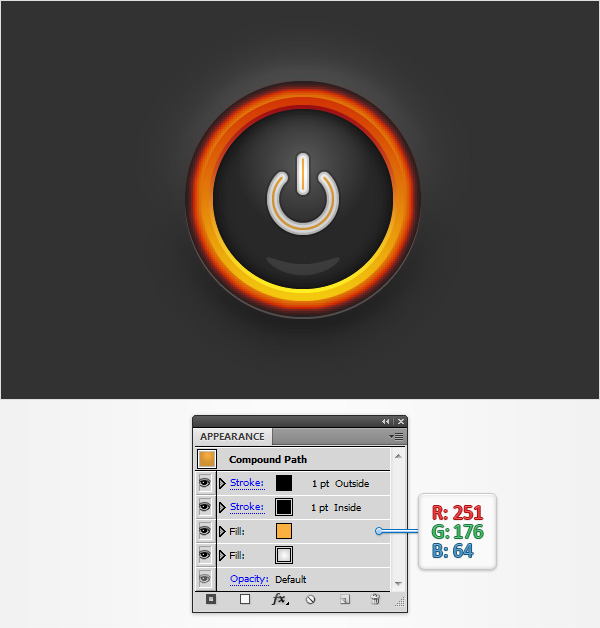

No comments:
Post a Comment